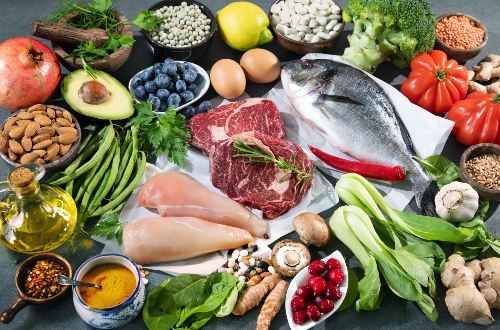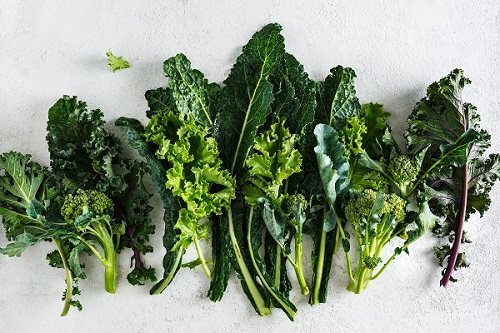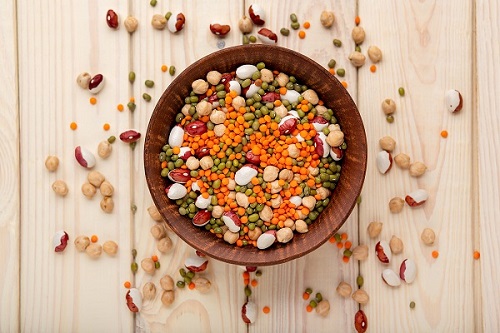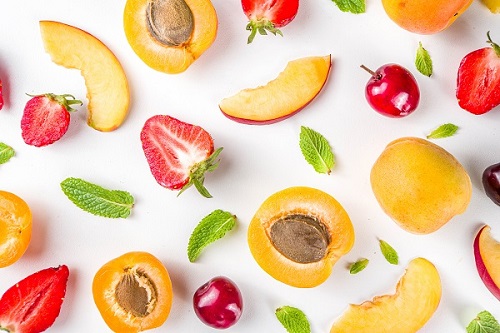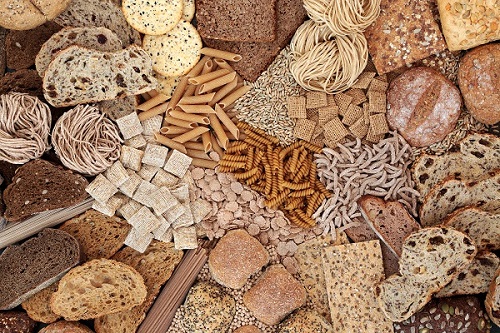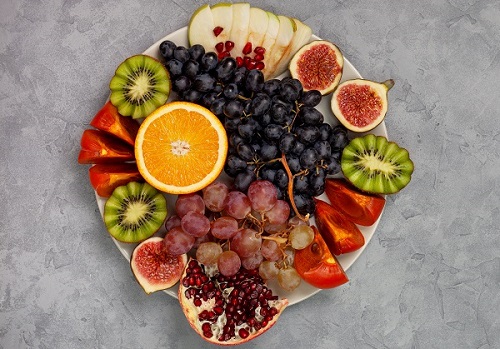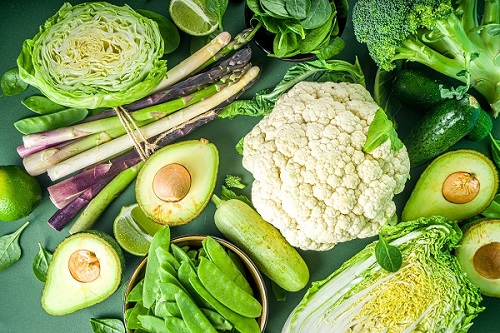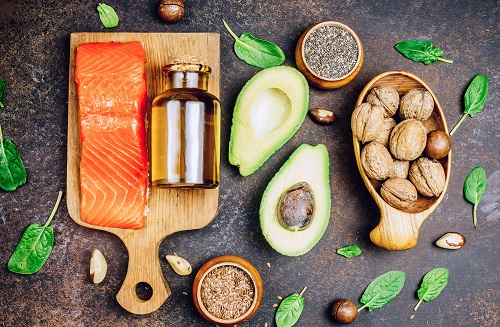From colorful veggies to plant-powered protein, we spent this last year featuring the five food groups from MyPlate. Follow along as we recap all the fun food facts we learned through the blog series!
Here at UGA SNAP-Ed, we want you to feel confident enough to make food choices that support your health. That’s why we created the Food Talk Features… Series. Each month, we shared a food group or sub-group from the Dietary Guidelines for Americans and USDA’s MyPlate. Each blog included benefits of a food group and some of our favorite recipes.
To wrap up the series, we’re taking you through the highlights! Click on the blog title or picture of each food group or sub-group to read the full blogs.
January: Food Talk Features Series
The five main food groups are:
- Fruits
- Vegetables
- Grains
- Protein Foods
- Dairy
… And a bonus “group” for important nutrients:
- Oils (not shown in graphic below)
![]()
Foods from each group should be included in most meals. The balance of nutrients from each food group will help you meet your nutrition needs. Check out the full blog here to read our introduction to the food groups and MyPlate.
February: Red and Orange Vegetables
This Vegetables sub-group is known for its bright colors. Veggies like bell peppers, carrots, and sweet potatoes have a nutrient called beta-carotene. This nutrient turns into vitamin A, which has been shown to promote eye health. It has even been linked to cancer prevention! Rave about red and orange vegetables with the full blog here.
March: Dark Green Vegetables
Dark green vegetables are nutrient powerhouses! They contain folate, iron, vitamin C, and so many more. Folate helps make red blood cells. It is also an important nutrient for pregnant women. The rich, green color of dark green vegetables makes them the perfect addition to any stir fry, egg dish, or soup. Take a bite out of dark green vegetables and read the full blog here.
April: Beans, Peas, & Lentils and Starchy Vegetables
These two Vegetables sub-groups are delicious and nutritious! Beans, peas, and lentils are a unique group of veggies because they contain protein. If you choose not to eat meat, eating this sub-group of vegetables will help you meet your protein needs!
Starchy vegetables are often criticized, but they contain energy that helps us get through long days. Plus, some starchy vegetables, like potatoes, contain potassium. Potassium helps maintain a healthy blood pressure, and most Americans don’t get enough! Learn more about why we love these affordable veggies here.
May: Berries and Summer Fruits
These flavorful fruits are at their ripest and cheapest in the summer. They are filled with juice, which helps keep us hydrated. These fruits are also rich in nutrients and compounds that support health! For example, berries contain anthocyanins. Anthocyanins are linked to protection against heart disease, cancer, and age-related memory losses. Sink your teeth into berries and summer fruits in our blog here.
June: Dairy
Dairy includes any food made from milk. Nutrition professionals like dairy because it has easily absorbed protein, calcium, and vitamin D. Most Americans get a majority of their calcium from dairy products! Plus, dairy foods have protein to help build and maintain healthy muscles and bones.
If you have tummy troubles after eating dairy foods, or simply choose not to eat dairy, you have options! Fortified (added vitamin D and calcium) soy milk is our non-dairy beverage of choice. This is because soy contains protein, too! Whether you sip, scoop, or spread your dairy products, learn more about their health benefits and other options here.
July: Grains
The grain group can be divided into two categories: whole grains and refined grains. Whole grains contain more of the healthy fats and fiber than refined grains. Both provide our bodies with energy. This translates to higher energy levels to get through busy days!
Choose whole grains when you can to get the most health benefits. Look for ingredients like “whole wheat flour” or “whole grain cornmeal” on pre-made items. Go for brown rice or whole wheat bread if you can. The rule of thumb is to make “half your grains whole!” Find whole grains you enjoy in the full blog here.
August: Protein Foods
Protein is a nutrient that provides calories (energy). It is in many different foods—all animals, and some plants. We call foods that contain protein “protein foods.” In addition to their actual protein content, many protein foods have other important nutrients. These include iron and vitamin B12. Iron helps carry oxygen throughout the body. Vitamin B12 ensures healthy blood cells, nerves, and brain function. Pick your favorite protein foods with our blog here.
September: Fall and Winter Fruits
Citrus fruits and others like apples, grapes, and pears come in season as the days get shorter. Choosing in-season produce saves money. In-season produce also makes it easy to “eat the rainbow” of colorful fruits year-round! Fruits are known for being easy sources of fiber and water. A good balance of fiber and water is important for healthy digestion. A diet with enough fiber may also reduce the risk of heart disease and diabetes! Fall for these seasonal fruit options here.
October: Other Vegetables
This veggie sub-group contains vegetables with a mix of nutrients. No matter the sub-group, all veggies are nutritious and needed in a balanced diet! Other vegetables are great sources of fiber and water. Each food in this group also has extra benefits. For example, mushrooms contain an antioxidant called selenium. Selenium helps to protect our cells.
This veggie sub-group contains so many different vegetables… The recipe options are endless! Find inspiration for your next veggie-filled meal in the full blog here.
November: Oils and Unsaturated Fats
Fat has a bad reputation, but there are many types of fat that protect our bodies! Unsaturated fats and oils are sometimes called “healthy fats” because they are good for us. They help to lower cholesterol levels, protect the heart and organs, and prevent damage to our cells. We can get these healthy fats through cooking oils and foods that contain fat. Examples include fatty fish (salmon and tuna, for example), nuts and seeds, and even veggies like avocados! Find a new favorite healthy fat here.

Do you have a favorite food group? It’s hard to choose just one! Each food group provides unique nutrients to support our health. We hope our Food Talk Features… Series gave you the confidence you needed to make healthy eating habits that work for you!
Written by Melanie Ng, Ph.D. Candidate | Edited by Leslie Davis, MS, RD, LD, CDCES and the Nutrition Education Team
Posted: December 6, 2021
